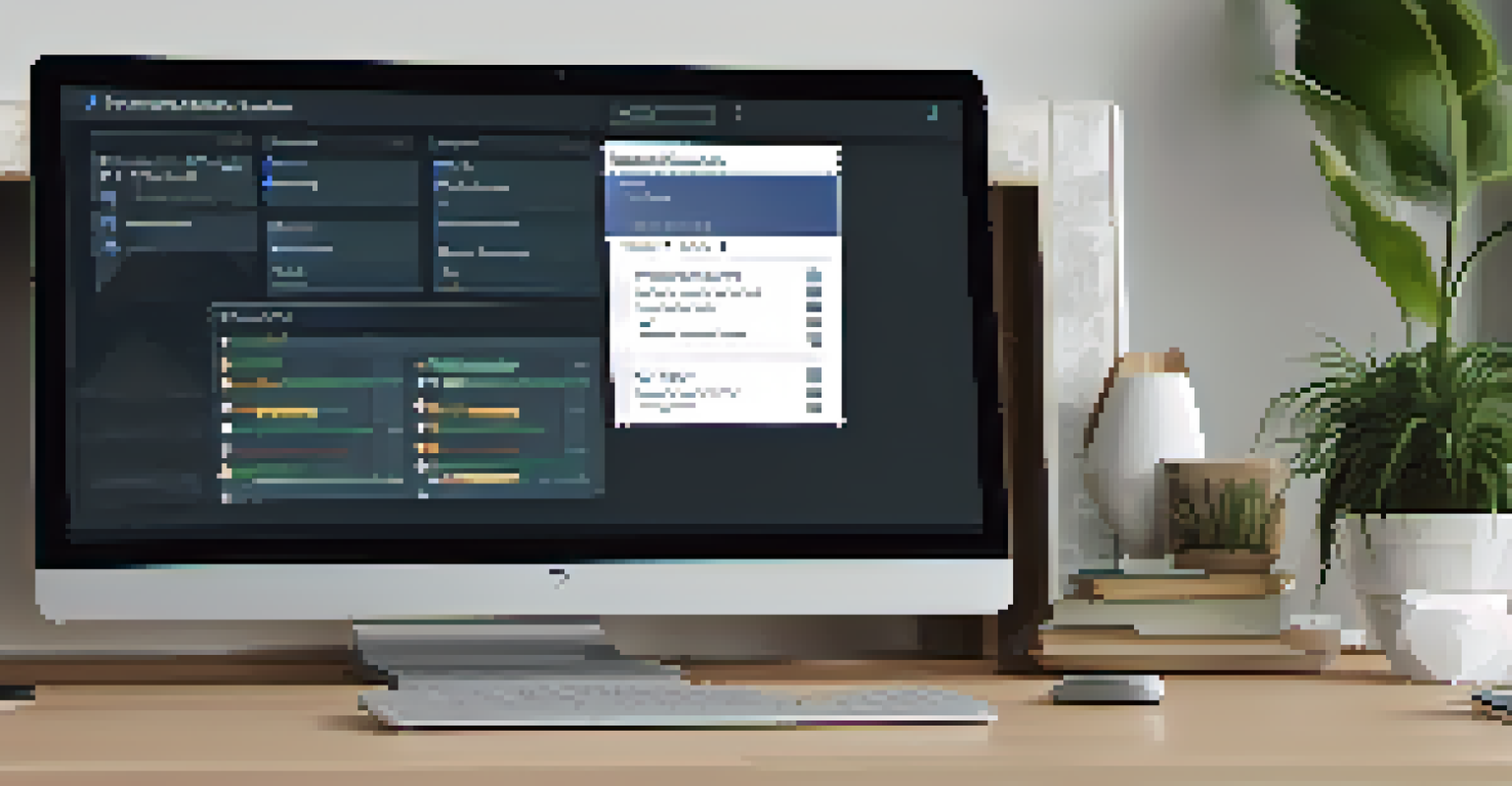Cognitive Load Management for Effective Distance Learning

Understanding Cognitive Load: What It Is and Why It Matters
Cognitive load refers to the amount of mental effort being used in the working memory. In distance learning, students often face a unique set of challenges that can overwhelm their cognitive capacity. This overload can lead to frustration and decreased learning effectiveness. By understanding cognitive load, educators can create a more supportive learning environment.
Cognitive load theory suggests that the more we can reduce extraneous cognitive load, the more working memory we have available for learning.
There are three types of cognitive load: intrinsic, extraneous, and germane. Intrinsic load is the complexity of the material itself, extraneous load is the way information is presented, and germane load involves the processing of information for deeper learning. Recognizing these distinctions helps in designing learning experiences that minimize unnecessary strain on students' cognitive resources.
Effective cognitive load management is crucial, especially in a digital landscape filled with distractions. When students can focus their mental capacities on learning rather than navigating complex interfaces or irrelevant information, their overall performance improves. This understanding is the first step toward enhancing distance education.
Recognizing the Signs of Cognitive Overload in Students
Cognitive overload can manifest in various ways, including confusion, frustration, and a decline in performance. When students struggle to comprehend the material or complete assignments, it often signals that their cognitive load is too high. Recognizing these signs early can help educators intervene and adjust their teaching strategies accordingly.

Another indicator of cognitive overload is procrastination. If students are consistently delaying their work, they might feel overwhelmed by the volume of information or the complexity of tasks. This avoidance behavior can hinder their learning progress and lead to a cycle of stress and disengagement.
Understanding Cognitive Load Types
Recognizing intrinsic, extraneous, and germane cognitive load helps educators design better learning experiences.
Engaging in open communication with students is vital for identifying cognitive overload. Encouraging them to share their challenges can provide valuable insights. This way, educators can adapt their approaches to better support their students’ learning journeys.
Effective Strategies for Reducing Cognitive Load
One effective strategy for reducing cognitive load is chunking information into manageable parts. By breaking down complex concepts into smaller, digestible pieces, students can process information more easily. For example, instead of presenting an entire chapter at once, educators might introduce key points gradually, allowing time for reflection and understanding.
The key to managing cognitive load is to create a learning environment that allows for maximum engagement and minimum distraction.
Utilizing multimedia resources can also help alleviate cognitive load. Videos, infographics, and interactive materials can present information in varied formats, catering to different learning styles. This variability not only makes learning more engaging but also helps reinforce understanding through multiple channels.
Additionally, clear and concise instructions are essential. When students know exactly what is expected of them without sifting through excessive information, they can focus their cognitive resources on the task at hand. This clarity can significantly enhance their learning experience.
Encouraging Active Learning to Manage Cognitive Load
Active learning strategies, such as discussions, problem-solving, and collaborative projects, can effectively manage cognitive load. When students engage with the material actively, they process information more deeply, reducing the burden on their working memory. This hands-on approach encourages critical thinking and better retention of knowledge.
For instance, incorporating group work in a virtual classroom allows students to share ideas and tackle challenges together. This collaboration not only lightens individual cognitive load but also fosters a sense of community among learners, which is crucial in a distance learning environment.
Signs of Cognitive Overload
Identifying confusion and procrastination in students can signal cognitive overload, prompting necessary interventions.
Additionally, encouraging self-directed learning can empower students to take charge of their education. By allowing them to select topics of interest or choose how to engage with content, educators can help students manage their cognitive resources more effectively, promoting a personalized learning experience.
Utilizing Technology for Enhanced Cognitive Load Management
Technology can be a powerful ally in managing cognitive load during distance learning. Learning management systems (LMS) can provide structured environments where students can easily navigate materials. By organizing content logically and providing clear pathways, educators can reduce the cognitive effort required to find and understand information.
Moreover, tools like quizzes and interactive assessments allow for immediate feedback, helping students gauge their understanding. This instant insight can prevent cognitive overload by addressing misconceptions before they become overwhelming. It creates a more interactive and engaging learning experience.
Additionally, using digital platforms for communication, such as discussion forums or chat applications, can facilitate collaboration and support. These tools enable students to connect with peers and instructors, promoting a sense of belonging and reducing feelings of isolation, which can contribute to cognitive load.
The Role of Mindfulness in Cognitive Load Management
Mindfulness practices can significantly enhance cognitive load management for students. Techniques such as deep breathing, meditation, or short breaks can help students reset and refocus their minds during challenging learning sessions. These mindful moments allow for mental clarity and better information processing.
Incorporating mindfulness into the learning routine can also help students recognize their cognitive limits. When they become more aware of their mental state, they can take proactive steps to manage their workload and avoid overload. This self-awareness is a crucial skill for lifelong learning.
Strategies to Reduce Cognitive Load
Implementing chunking, multimedia resources, and clear instructions can significantly alleviate cognitive load for learners.
Furthermore, educators can model mindfulness practices within the classroom. By promoting a culture of well-being and encouraging students to prioritize their mental health, educators can create a more supportive learning environment that fosters effective cognitive load management.
Assessing the Impact of Cognitive Load Management Strategies
Evaluating the effectiveness of cognitive load management strategies is essential for continuous improvement in distance learning. Educators can gather feedback from students through surveys or informal discussions to understand what approaches are working. This data can inform future instructional design and help tailor methods to better meet student needs.
Additionally, analyzing student performance and engagement metrics can provide insight into the impact of cognitive load management efforts. If students show improvements in grades or participation levels, it may indicate that the strategies implemented are effective. Conversely, if challenges persist, it may signal a need for further adjustments.

Ultimately, a commitment to ongoing assessment and refinement ensures that cognitive load management remains a dynamic aspect of distance learning. By staying attuned to student experiences, educators can create an adaptive, responsive learning environment that prioritizes student success.